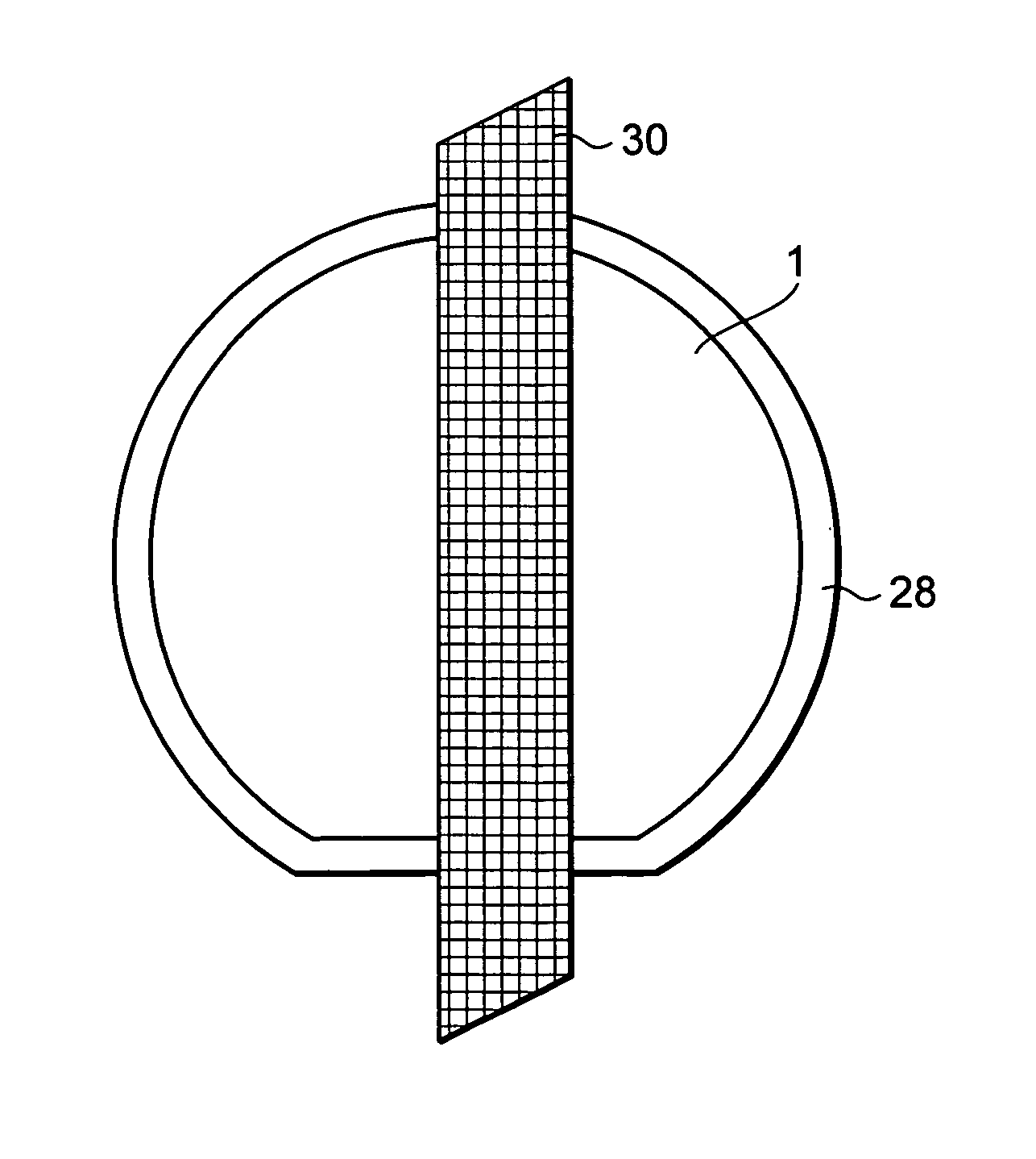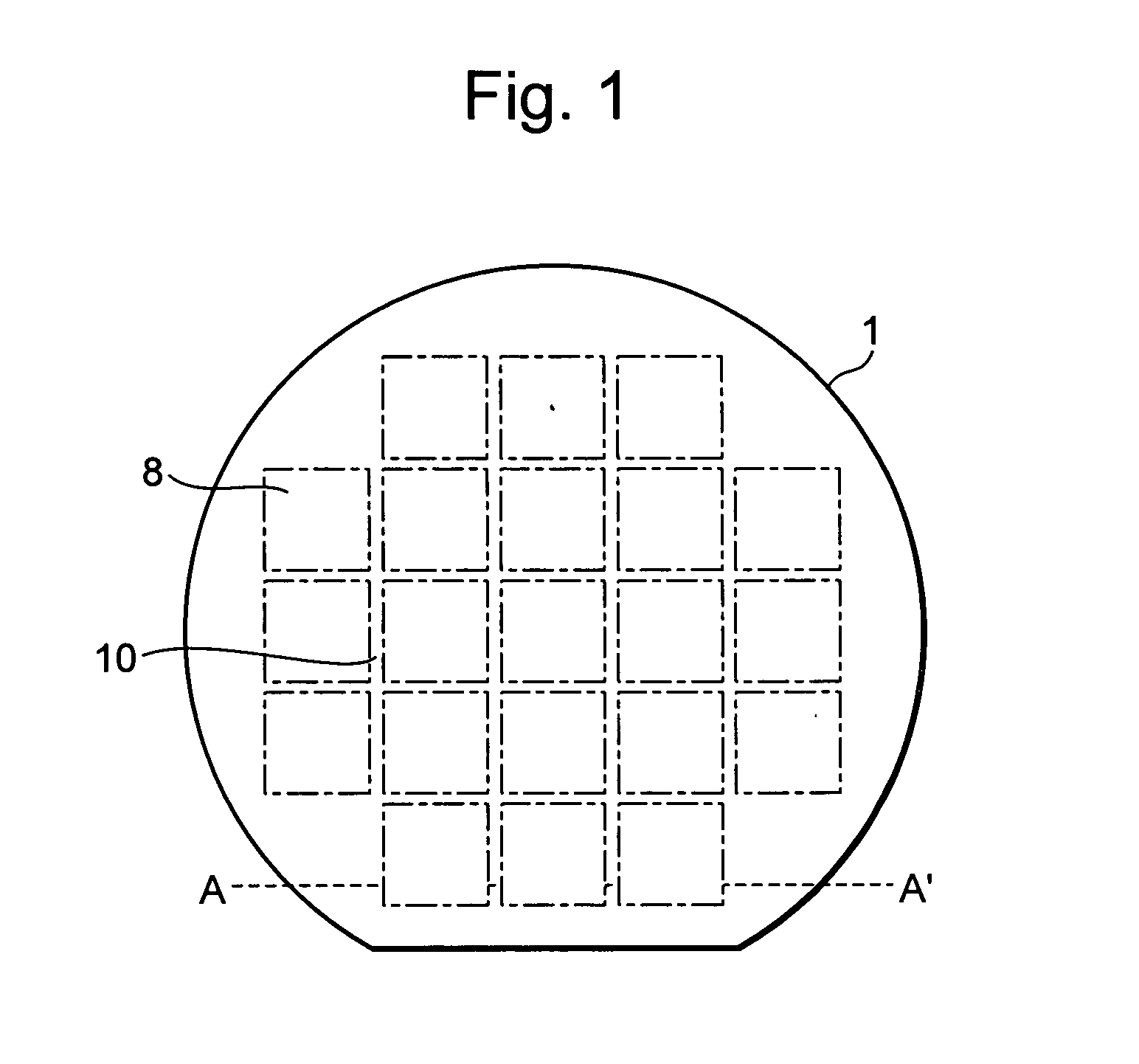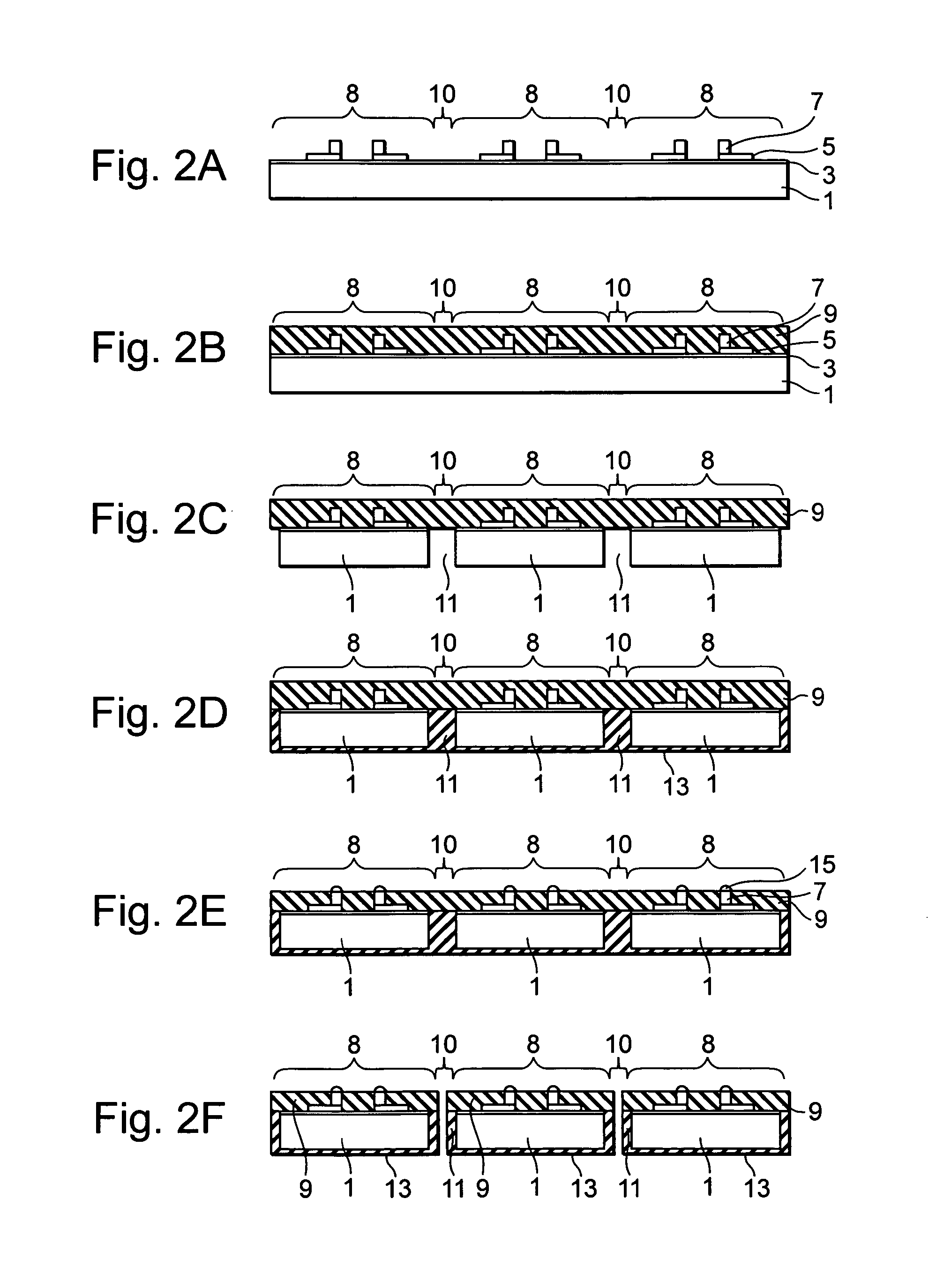Method for manufacturing semiconductor device
a semiconductor and manufacturing technology, applied in the direction of semiconductor devices, basic electric elements, electrical appliances, etc., can solve the problems of reducing yield, reducing the possibility of chipping at division and subsequent chipping of semiconductor devices, and reducing the possibility of product whose semiconductor substrate is chipped, etc., to achieve the effect of reducing the possibility of chipping at division and subsequent to the completion of a semiconductor devi
- Summary
- Abstract
- Description
- Claims
- Application Information
AI Technical Summary
Benefits of technology
Problems solved by technology
Method used
Image
Examples
first preferred embodiment
[0030] A method for manufacturing a semiconductor device, according to a first embodiment of the present invention will be explained using FIGS. 1 through 4. FIG. 1 is a plan view of a semiconductor wafer of the present embodiment, and FIGS. 2(A) through 2(F) are respectively sections taken every manufacturing process steps in the present embodiment and sectional views each showing a portion taken along line A-A′ of FIG. 1. FIG. 3 is a view showing, in an enlarged form, a sectional view illustrating a trench forming process step [process step 1-3]. FIG. 4 is a sectional view of a semiconductor device manufactured by the manufacturing method of the present embodiment.
[Process Step 1-1] Protruded Electrode Forming Step:
[0031] As shown in FIGS. 1 and 2(A), posts 7 (protruded electrodes) are first respectively formed on a plurality of chip areas 8 of a semiconductor wafer 1 having the plurality of chip areas 8 and boundary regions 10 formed among the chip areas 8 both of which are pr...
second preferred embodiment
[0060] A method for manufacturing a semiconductor device, according to a second embodiment of the present invention will be explained with reference to FIG. 1, FIG. 5 and FIG. 6. FIG. 1 is a plan view of a semiconductor wafer employed in the present embodiment. FIGS. 5(A) through 5(F) are sections taken every manufacturing process steps in the semiconductor device manufacturing method according to the second embodiment and are sectional views taken along line A-A′ of FIG. 1. FIG. 6 is a sectional and bottom view of a semiconductor device manufactured by such a manufacturing method.
[Process Step 2-1] Protruded Electrode Forming Step:
[0061] As shown in FIGS. 1 and 5(A), posts 7 (protruded electrodes) are first respectively formed on a plurality of chip areas 8 of a semiconductor wafer 1 having the plurality of chip areas 8 and boundary regions 10 formed among the chip areas 8 both of which are provided in the surface of the semiconductor wafer 1. That is, the semiconductor wafer 1 ...
PUM
 Login to View More
Login to View More Abstract
Description
Claims
Application Information
 Login to View More
Login to View More - R&D
- Intellectual Property
- Life Sciences
- Materials
- Tech Scout
- Unparalleled Data Quality
- Higher Quality Content
- 60% Fewer Hallucinations
Browse by: Latest US Patents, China's latest patents, Technical Efficacy Thesaurus, Application Domain, Technology Topic, Popular Technical Reports.
© 2025 PatSnap. All rights reserved.Legal|Privacy policy|Modern Slavery Act Transparency Statement|Sitemap|About US| Contact US: help@patsnap.com



